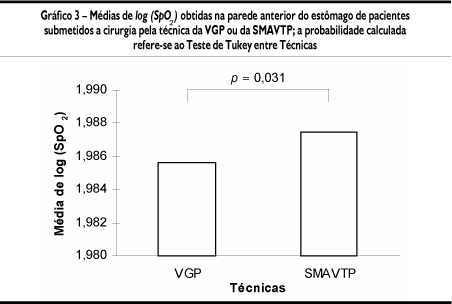Delayed gastric emptying of solid food is greater after proximal gastric vagotomy (PGV) than after anterior lesser curve seromyotomy with posterior truncal vagotomy (ASPTV) and may be due to the hypoxia in the gastric wall and mainly in the gastric pacemaker. PURPOSE: To verify if operative devascularization of the lesser curve and the gastric fundus could affect the entire stomach and particularly the pacemaker area. METHODS: Measures of intraoperative oxyhemoglobin saturation (SpO2) were taken by pulse oximetry on the anterior gastric wall in 20 patients with chronic duodenal ulcer, randomly allocated in two groups of 10 individuals for surgical treatment, by PGV or ASPTV. RESULTS: Measurements, before partial fundoplication, showed that the area of the proximal lesser curve and the gastric fundus had a significant decrease in the SpO2 when compared to the gastric corpus (p < 0,05); the SpO2 was not reduced significantly by the procedures on the pacemaker area; the ligature of short gastric vessels, in association with PGV or ASPTV, reduced significantly the SpO2 (p < 0,05); and, PGV resulted in a SpO2 significantly lower than in ASPTV (p < 0,05). CONCLUSION: When PGV is associated with the ligature of the short gastric vessels, it causes acute ischemic changes in the proximal lesser gastric curve and in the fundus more intensively than ASPTV. The gastric pacemaker area does not present hypoxia immediately after operative procedures.
Stomach; Duodenal Ulcer; Proximal Gastric Vagotomy; Oximetry; Pacemaker




